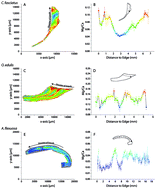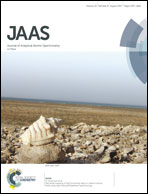Elemental mapping of Mg/Ca intensity ratios in marine mollusc shells using laser-induced breakdown spectroscopy
Abstract
Records of past environmental conditions in shell carbonate are usually derived from compositional analysis (i.e. trace elements, stable oxygen, carbon, and nitrogen isotopes) performed along the direction of the shell's growth and thus through time. However, compositional variations within isochronous parts of the shell can distort the environmental record and are difficult to assess without extensively mapping the whole shell. Here we apply Laser Induced Breakdown Spectroscopy (LIBS) to efficiently map the elemental change throughout the growth increments of three mollusc shells (Conomurex fasciatus, Ostrea edulis, Anomalocardia flexuosa). We employ an automated LIBS setup to map the Mg/Ca composition of whole shell sections with over 2000 data points per hour. By assessing the spatial variability of Mg/Ca intensity ratios this method has the potential to mitigate distorted results while increasing the resolution of derived palaeoenvironmental information.

- This article is part of the themed collection: Atomic spectrometry for the analysis of biological samples


 Please wait while we load your content...
Please wait while we load your content...